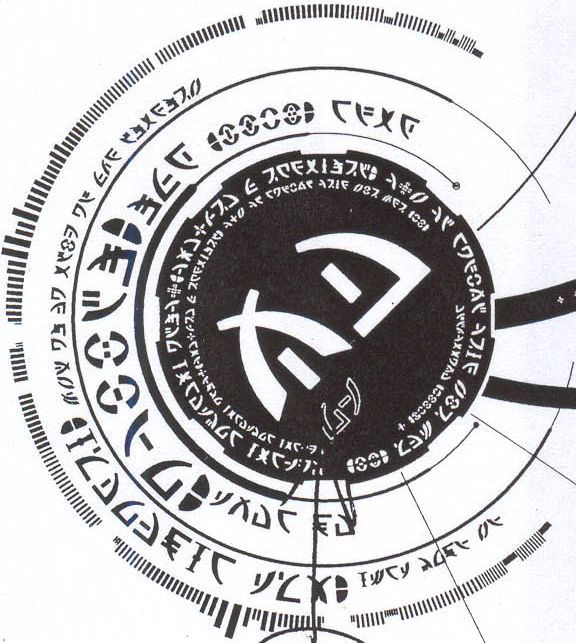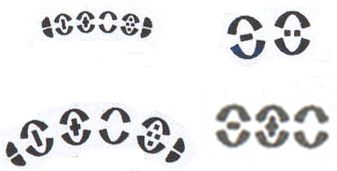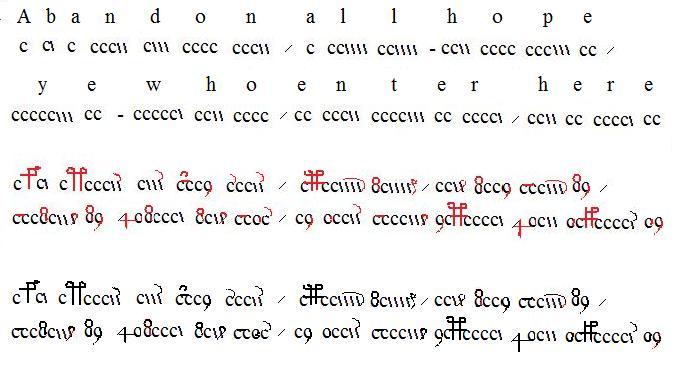Earlier this year, I was contacted by a 58-year-old US Army / Navy computer programmer from North Carolina: he claimed to have solved the mystery of the Voynich Manuscript, and wanted me to post details on my Cipher Mysteries blog, but without revealing his identity.
Yesterday, however, Richard Rogers went public with his claims (which is why I can now say his name): here’s a picture of him (from the same Havelock News article):-
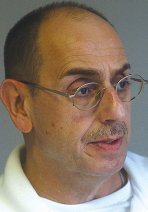
With degrees (it says here) in “ancient history, languages and computer science”, he originally used Voynichese to benchmark some anti-fraud pattern recognition software he had been developing, believing (courtesy of Gordon Rugg’s various publications, I’d guess) that it was what he calls “manufactured” (i.e. hoaxed) text. As an aside, his software was built around Benford’s Law (specifically, Hal Varian’s 1972 take on it), a logarithmic distribution law which has similarities with (the rather more familiar) Zipf’s Law.
However, when (to his great surprise) the software reported back that the Voynich Manuscript did actually seem to contain meaningful information, he found himself being rapidly drawn into the VMs’ tangled research web.
So far, this is all a straightforward techy “call to adventure” narrative: but where it goes from here is a bit odd. It took me ages to even begin to understand what he thinks he can see in the VMs – and I’m still miles off understanding why it might be so, as well as how he made the leap from (a) grasping that there is meaningful content, to (b) seeing how that meaningful content actually works. Which is why every time I tried to post about this, I’ve ended up giving up halfway through: but now he’s gone public, I guess I’ll have to complete the job as best I can…
Here’s how it all starts.
Rogers believes that Voynichese letters express a kind of symbolic language (which he calls “proto-sentential logic” or “sententional propositional calculus”) for encoding secret shapes (which he calls “runes” or “runic glyphs”), a bit like an encrypted Renaissance Logo driving a turtle trapped inside a 5×5 grid. He calls this system “Runus”.
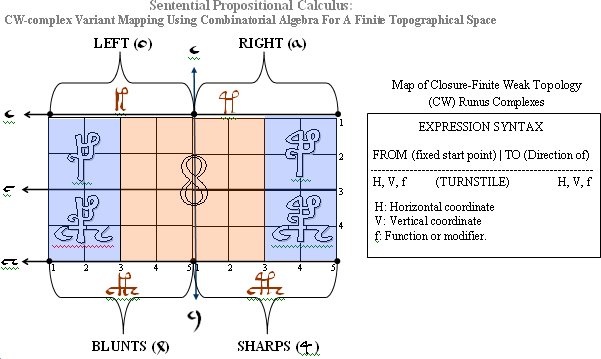
He calls double-leg gallows “staves” (red text in the diagram) and single-leg gallows “stakes” (blue background in the diagram): these are “key to navigating the manuscript”, insofar as (if I’ve understood it properly) Runus expressions always contain these staves/stakes (or sometimes [EVA d]) in the middle.
Finally, here are the seven specific Runus rules Rogers believes Voynichese expresses (his descriptions not mine):-
- “RULE 1: Each line is an independent, stand-alone action. There is no punctuation because none is needed.
- RULE 2: All Rule-Oriented Expressions (ROE) are non-mathematical algebraic ‘draw & copy’ operations based on a 5X5 numbered solution grid.
- RULE 3: Draw operations always assume a horizontal top to bottom, left to right sequence unless modified by a functional character (i.e. a shape flag, left, right, top, bottom, etc.
- RULE 4: ALL ROA encapsulate one of eight turnstiles (sometimes 8 is applied as a turnstile)
- RULE 5: The eight turnstile shapes are broken into positional sets of functions. These are:
-
- Two stave turnstiles and two stake turnstiles in the left set.
- Four stave turnstiles and two stake turnstiles in the right set.
- RULE 6: Runus is a Rule-Oriented Expression (denoted by a the Greek rho, below). It is a coordinate system used to build a Rune character.
- RULE 7: The meaning, interpretation, and function of Runa – and the shapes they describe(RO), are very dependent.”
Here’s another of Rogers’ diagrams that might possibly help explain this:-

Just in case you glazed over halfway through the above (I’m not saying you actually did, but you certainly might have done), we should perhaps move swiftly on to look at a specific example of how Rogers thinks Voynichese works:-
[EVA odaiin] is translated as “Focus on the 3X3 square immediately adjacent to the left of the center position”.
From his Runus diagrams…
- [EVA o] = “left side”
- [EVA d] = “centre position”
- [EVA a] = “right side”
- [EVA ii] = “a count of 2”
- [EVA n] =”horizontal grid line counter”
According to his Runus rules, this appears to denotes a horizontal line drawn from the left side of the centre position across to the right side with a horizontal grid line count of two. But that’s about as far as I can usefully take this.
Here’s how Rogers annotates the first line of f1r into five individual Runus expressions. The “turnstiles” are red, “directional modifiers” are blue, while numbers (“grid coordinates”) are in pink:-

Here, ROE 1 says “Starting in Quadrant 1, in the DIRECTION Of the Right Half, DRAW a DEEP CURVED LINE from top to bottom“, while ROE 2 says “DRAW a SHALLOW CURVE from BOTTOM TO TOP, facing the RIGHT“. Put these two together and you get a “moon”. Rogers believes that the mysterious shape at the top right of f1r is the image described by the the first few Voynichese lines of f1r – and hence this acts as a kind of enciphering test.
Just as with the biliteral cipher I discussed yesterday, there’s certainly elements of steganography and verbose cipher at play here, lending an air of cryptographic plausibility. However, “Runus” does seem an enormously complicated piece of symbolic machinery to encrypt what are ultimately just shapes – a bit like using a Difference Engine as a shop till. And given that I personally don’t buy into the notion (however breathlessly expressed by conspiratorial iconologists) that any shapes are intrinsically heretical, or even that any particular shapes were intrinsically believed to be heretical, the whole proposed exercise of encrypting heretical shapes would seem to me to be both futile and improbable. Sorry, but that’s how it looks from here.
Also: I simply can’t see how Rogers got from pattern matching software to Runus – to my mind, there’s an inherent “chalk and cheese”-style gulf between the two. Though I can see the start-point and the end-point, I can’t see any logical reasoning that might step between the two. Yes, I can see that the “i” / “ii” / “iii” characters might in fact be Roman numbers (though even that I somewhat doubt, given that they resemble medieval page numbers so closely): but that’s about as close as I can get.
Rogers has tried to back up his “Runus” research with more conventional historical research, and “speculates that the manuscript was written by three generations of the Longhi Family in Italy, Martino Longhi the Elder (1534-1591), Onorio Longhi (1569-1619) and Martino Longhi the Younger (1602-1660).” However, I’m also somewhat skeptical of this, given that (a) the VMs appears to have 15th century marginalia, (b) the VMs appears to have had an Occitan owner in South-West France circa 1500, and (c) if the VMs was indeed bought by Rudolf II, that would have been prior to 1612, at which point Martino Longhi the Younger was 10 years old.
Of course, in the absence of any widely agreed decryption of even a single word, it’s almost impossible to disprove any assertion anyone makes about the Voynich Manuscript: and naturally, it is this rich loam of uncertainty that helps Voynich Theories to flourish so much. But now I have to go and lie down – my head’s hurting from all that proto-sentential calculus, just like it did every other time I tried to write it up. 🙁
